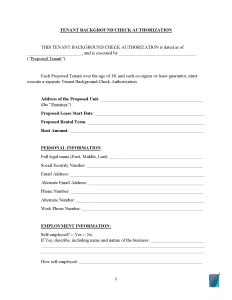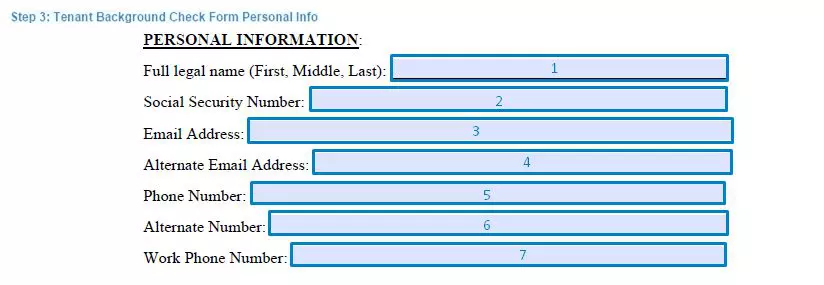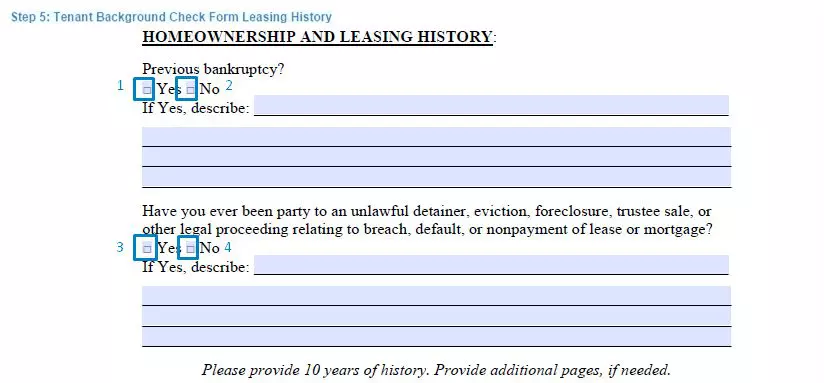
All leasing agreements are usually conducted based on the mutual trust of the parties. However, without previous knowledge regarding a person’s credit history or criminal record, how can one be sure that the tenant will pay on time, not steal property, or cause more substantial damage to the premises or landlord’s reputation?
The landlord’s cautiousness and desire to verify if the potential tenant is a trustworthy person is more than understandable. However, running any background checks without the applicant’s consent is impossible as federal authorities gather and manage all personal data.
Inexperienced landlords can encounter the need to run a tenant credit and background check for the first time and be confused about the complexity of the process. This manual is dedicated to reducing the confusion and mistakes in getting the tenant background check authorization form signed by the applicant.
Table of ContentsA tenant background check form is a binding document where the applicant grants permission to a landlord or their property managers to get the tenant’s credit history or criminal history. This information helps the landlord evaluate the prospective tenants’ reliability and, based on the given information, offer or refuse the leasing contract.
Upon the background check, the landlord will obtain the public records and details about the applicant’s history, including the following:
In general, not all restrictions based on the credit and background check results can be considered lawful. Thus the landlord must provide an apparent reason for refusal to rent to avoid getting the discrimination claims. A landlord has the right to decline the applications from a past sex offender or for criminal history that shows the tenant’s ability to jeopardize property safety or safey of other tenants.
A rental background check may seem a tedious process. However, it drastically reduces the risk of getting an unreliable or disastrous tenant on your premises. The process of accessing background check can be simply divided into three stages:
1. Request permission for conducting a rental background check
You will not be able to run the background check without a written consent form. The most obvious and convenient way to request a tenant background check authorization is during a rental application. Make sure to prepare the background check authorization form and send it to the potential tenant with a short explanation of why it is needed.
2. Select a service provider
Find an online or offline company that offers services for running a background check. Pay the fee for services, which can vary from $18 to $72 depending on the limitations of credit checks and the state).
3. Get and evaluate the results of the background check
Usually, it takes between an hour and three days to receive the result of a tenant background check. A landlord may take their time to check if the credit report, employment history, and criminal record are clear enough to offer the lease agreement.

Ensure that the credit and background check authorization form you offer to a tenant includes all crucial details and is filled out correctly. Follow this manual to get the proper binding document.
Step 1. Complete the general information

In the first section, you need to indicate the date when this document is written and the proposed landlord’s full name to receive the right to run the background check.
Step 2. Specify the rental details

Next, it is crucial to provide the details regarding the rental agreement. You need to provide the address of the proposed premises, the lease start day, how long the lease agreement is conducted, and the agreed rent payment amount.
Step 3. Fill out the personal information
The person that gives consent to undergo the credit/criminal background check must indicate contact and personal details, including:

Step 4. Include the employment information (previous and current)

If not self-employed, include the supervisor’s name and their contact phone number, job title, and wage. Also, provide alternative sources of income if applicable.
Step 5. Provide the leasing history

Disclose truthful information about previous bankruptcy and events of unlawful detainer or breach, default, or nonpayment of lease or mortgage, if any. You also need to provide the information regarding the previous leasing records for the past ten years, including the address of current and past tenancies, the period you occupied the property, and the reason for leaving. Also, you need to provide the rent payment amount and the contacts of previous landlords.
Step 6. Introduce additional occupants

If you share the property with family or friends, you should provide the names of all persons who will live on the premises, including minors and family and non-family members. Also, clarify their relations with you.
Step 7. Indicate references

Select two non-family members who can recommend you as an occupant and decent person to a landlord. Leave their contact details, including phone number, email address, and their relation with you.
Step 8. Add the required disclosures
Not all information is necessary for disclosure. You have a right not to share some sensitive information with a landlord if Fair Housing Laws protect it. You are encouraged to discuss what details they require with a landlord and check only the boxes that apply.

Step 9. Sign the consent form

By signing this document, a tenant gives a landlord or their legal representatives authority to order background and investigative reports on the potential tenant. The tenant must provide their current full name and previous legal names (as maiden) if any exist and are used.